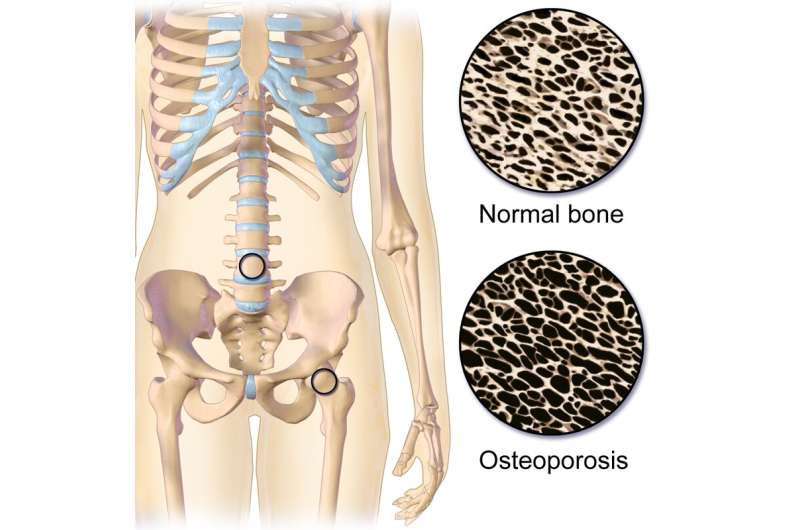Novel approach to ultrasound raises possibility of new medical applications

A new ultrasound technique provides a non-invasive way of assessing bone structure on the microscale. Researchers hope to fine-tune the technique for use in assessing osteoporosis risk and treatment.
Researchers have also demonstrated that a variation of the same technique can distinguish between tumors and healthy tissue in a study using laboratory rats.
"One thing that's exciting about these techniques is that we've taken one of ultrasound's shortcomings and turned it to our advantage," says Marie Muller, an assistant professor of mechanical and aerospace engineering at North Carolina State University and corresponding author of papers on the two studies.
The shortcoming is the fact that ultrasound cannot give us clear images when used in complex media, such as bone. That's because the ultrasound waves bounce all over the place in these complex environments, making it impossible to calculate how far they've traveled.
"In bone, for instance, sound waves will travel through the solid parts of the bone and then scatter whenever they hit a pore," Muller says. "We found that this is a useful way to assess a bone's microstructure."
Muller and her collaborators theorized that by looking at the rate at which ultrasound waves diffused from a bone site, they can assess both the number of pores in a given area—or pore density—and the size of those pores.
"The proof-of-concept paper we just published finds that there is a consistent correlation between the diffusion constant and bone pore size and density," Muller says. "However, it's worth noting that this was done in a computational model. We're currently doing an in vivo study with human patients and an in vitro study with human bone.
"We are at least years from clinical applications, but if the results hold up, we may have a way to monitor patients on a regular basis to determine the health of the bone. That means people can track their potential risk for osteoporosis without having to worry about the radiation exposure associated with X-rays. In addition, the technique could help researchers and health care providers determine the effect of osteoporosis treatment efforts."
Because the research is ongoing, no clear protocols have been established, making it difficult to estimate cost—though it would likely be comparable to existing ultrasound assessment applications, and much cheaper than high resolution CT scanning.
Muller also led a study that used a nearly identical technique to try to distinguish between healthy soft tissue and solid tumors in a rat model.
The tumor study made use of microbubbles injected into the vasculature of lab rats. Because bubbles cause ultrasound waves to scatter—just like pores in bone—ultrasound can track changes in the density of microbubbles as they travel through a rat's network of blood vessels.
Because tumors create networks of blood vessels that are denser and more complex than what is found in healthy tissue, researchers found that they could identify tumors by looking for areas where the microbubbles were slow to diffuse.
"We're excited about this finding, and are hoping to secure funding that would allow us to move forward with this line of research," Muller says.
The paper on bone microstructure, "Acoustic diffusion constant of cortical bone: Numerical simulation study of the effect of pore size and pore density on multiple scattering," was published Aug. 8 in the Journal of the Acoustical Society of America.
The paper on tumors and soft tissue, "Ultrasound multiple scattering with microbubbles can differentiate between tumor and healthy tissue in vivo," was published May 31 in the journal Physics in Medicine & Biology.
More information: Yasamin Karbalaeisadegh et al. Acoustic diffusion constant of cortical bone: Numerical simulation study of the effect of pore size and pore density on multiple scattering, The Journal of the Acoustical Society of America (2019). DOI: 10.1121/1.5121010
Kaustav Mohanty et al. Ultrasound multiple scattering with microbubbles can differentiate between tumor and healthy tissue in vivo, Physics in Medicine & Biology (2019). DOI: 10.1088/1361-6560/ab1a44
Journal information: Journal of the Acoustical Society of America , Physics in Medicine and Biology
Provided by North Carolina State University



















